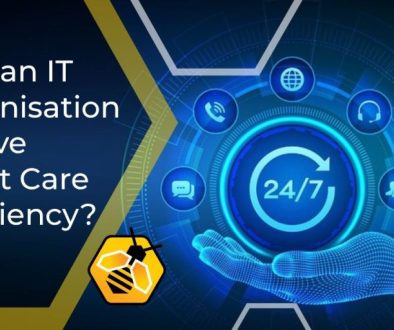Boosting Cyber Resilience for UK SMEs: A Strategic Approach
Introduction: Cyber Security and Business Resilience – Thinking Strategically
For today’s organisations, especially SMEs in the UK who rely heavily on technology and the Internet to do business, cyber attacks are a very real threat. The cyber threat landscape is complex, constantly changing, and tricky to navigate; for every vulnerability fixed, another pops up, ripe for exploitation.
Unfortunately, even the most secure organisation can fall victim to a cyber attack. To a large extent, it is simply a case of having the odds stacked against you: while you need to protect all your assets from all types of threat, an attacker needs only one exploitable weakness to get into your systems. Furthermore, any single security measure is likely to be inherently ineffective against other kinds of threat.
This is why organisations must move beyond a simple checklist of security tools and combine robust cyber security with strategic resilience.
1. Planning Your Cyber Defences: The Value of Thinking Resiliently
Resilience is the ability not only to withstand a cyber attack but also to quickly recover and maintain core business functions during and after an incident. This requires a shift in mindset—from if we are attacked to when we are attacked.
Elements to take into account as you plan:
Critical Assets Identification: What data, systems, and services are absolutely vital for your business to operate? These must be prioritised.
Business Impact Analysis (BIA): If a system goes down, what is the financial and reputational cost per hour? This informs your recovery time objectives (RTOs) and recovery point objectives (RPOs).
User Behaviour: Employees are often the weakest link. Factor in training and security awareness as a core defensive layer.
Supply Chain Risk: Your IT systems are only as secure as the weakest link in your supplier chain.
2. The Basics of Cyber Risk Assessment
Effective resilience starts with understanding what you need to protect and what you are protecting it from. A robust cyber risk assessment doesn’t need to be overwhelming.
Key steps for SMEs:
Identify Assets: List all hardware, software, data (customer, financial, IP), and employees.
Identify Threats: What are the most likely threats to your business? (e.g., phishing, ransomware, insider threat).
Identify Vulnerabilities: Where are your weaknesses? (e.g., outdated software, weak passwords, lack of staff training).
Determine Risk: Calculate Risk = Likelihood x Impact. Prioritise high-risk areas first.
This assessment allows you to allocate limited resources effectively, ensuring you focus on risks that genuinely threaten your business resilience.
3. Why Defence-in-Depth Makes Sense
For SMEs, it makes little sense to spend all your budget on one ‘silver bullet’ security product. A defence-in-depth strategy acknowledges that any single security measure can fail, and therefore, multiple, overlapping defensive layers are required.
Imagine your business as a castle:
The Outer Wall (Perimeter): Firewalls, email filters, Web Application Firewalls.
The Moat (Network): Network segmentation, access controls.
The Keep (Data/Endpoint): Endpoint Detection and Response (EDR), strong authentication, encryption.
The Guards (People): Security awareness training.
The Escape Route (Recovery): Robust, tested backups and a Disaster Recovery Plan.
This layered approach ensures that if one security control is breached, another is there to stop the attacker’s progression.
4. The Key Points: Prevention, Detection, and Response
A strategic cyber resilience plan must cover all three phases of the security lifecycle:
Prevention (Stop the attack)
Multi-Factor Authentication (MFA): Essential for remote access and critical systems.
Regular Patching: Keep all software, operating systems, and hardware firmware up-to-date.
Security Awareness Training: Invest in regular, relevant training for all staff.
Data Backups: Implement the 3-2-1 rule (3 copies of data, on 2 different media, 1 copy off-site/cloud).
Detection (Know you’re being attacked)
Monitoring: Use tools and services (like a Managed Detection and Response – MDR) to actively monitor network and endpoint activity for suspicious behaviour.
Logging: Centralised collection and analysis of security event logs.
Intrusion Detection Systems (IDS): Set up alerts for known attack patterns.
Response (Limit the damage and recover)
Incident Response Plan (IRP): A documented, actionable plan detailing who does what during an attack (containment, eradication, recovery, communication).
Business Continuity Planning (BCP): Procedures to maintain critical functions during the disruption.
Testing: Regularly test the IRP and BCP with ‘tabletop exercises’ to ensure the plan works under pressure.
5. How Bee IT Solutions Can Help You Build Resilience
At Bee IT Solutions in Leeds, we understand that UK SMEs need practical, effective, and affordable cyber security and resilience solutions. We don’t just sell tools; we offer a strategic partnership.
Our Cyber Resilience Framework is specifically designed to transition your business from being merely secure to truly resilient.
Strategic Planning: We start with a tailored risk assessment to identify your critical needs.
Framework Implementation: We help you implement the necessary layers of the Defence-in-Depth strategy, from advanced firewalls to EDR.
Managed Services: We offer outsourced monitoring, detection, and response services, acting as your dedicated security team.
Compliance: We help you align with essential standards like Cyber Essentials or ISO 27001, boosting client trust.
Don’t wait for the attack to happen. Start building your resilience today.
Ready to secure your future?
Contact the cyber resilience specialists at Bee IT Solutions today for a free, no-obligation Cyber Resilience consultation tailored for your UK SME.




